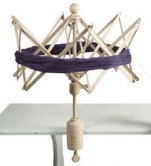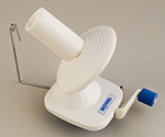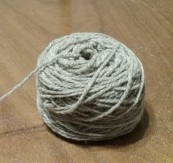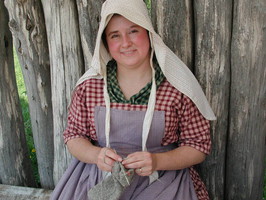
Yarn Balls: How Do I Use My Yarn?
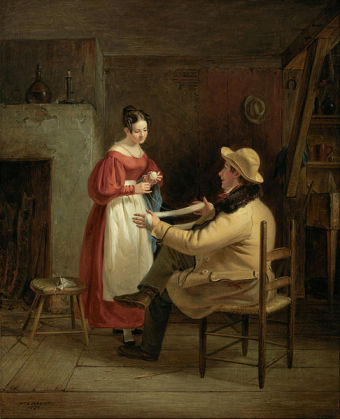 Winding yarn into balls by hand in "Winding Up," by William Sidney Mount, 1836. The knitter is winding the yarn into a ball, while her friend holds the yarn skein with a bit of tension. Holding the skein tight (instead of just laying it on the table) is
Winding yarn into balls by hand in "Winding Up," by William Sidney Mount, 1836. The knitter is winding the yarn into a ball, while her friend holds the yarn skein with a bit of tension. Holding the skein tight (instead of just laying it on the table) is
Acrylic yarn is usually sold in neat center pull balls, but most wool yarn, including mine, is sold in a traditional skein. I remember as a new knitter being very confused when I bought my very first skein of wool: How does one knit using something that is looks like a donut twist? After creating a knotted-up rat's nest out of my skein, I tearfully called on Verna, the little old lady who had taught me how to knit, and she introduced me to two lifesaving devices: the swift and the ball winder.
The first step is to untwist the skein, which leaves a giant circle of yarn. Don't think you can just lay the circle down on a table and unwind it - you can't! You must hold the circle of yarn with some tension while unwinding it, in order to avoid getting a jumble of knots. Using a yarn swift is the easiest way to hold your skein with some tension, but you can also use the back of a straight-back chair, or the arms of a good friend.
With the circle of yarn held securely, the next step is to wind the yarn into a ball. There is no secret to making a traditional hand-wound ball, just start with a tiny little ball and keep winding until the ball is about the size of an orange.
If you have a ball winder, winding the yarn into a center-pull ball makes it very easy to use. The "ball" produced by the ball winder is not actually a round ball. It is shaped like a tire on it's side, and is often called a "cake."
The ball winder used to create the center pull cake was invented in the 1990s, while wool yarn has been rolled into round balls by hand for centuries. At home I prefer to knit with a center pull cake, but if you are going to use your yarn at a historic site, museum, or historical reenactment, your impression will be more authentic with traditional round balls in your basket (or else keep your center-pull balls hidden under a pretty handkerchief in your basket).
Hand-winding your skein into round balls at an event is a very authentic activity. If your site or event includes children, this is an especially good and authentic activity for them. If your site invites the public to participate in hands-on activities, you could even entice the public to save you from the tedious chore in the same way that Tom Sawyer convinced his friends to paint the white picket fence!
And, if you don't want the adventure of winding your own balls, rest assured that I always have my swift and ball winder at events and I would be happy to wind skeins into center pull cakes for you.
"Worsteds (yarn) in use should be neatly wound in small balls, about the size of an orange. In knitting, keep the ball in the pocket, or in a bag hung to the arm, or a basket, and do
not allow it to roll on the table or floor, to get dusted."
The Workwoman's Guide, by A Lady (1838)
